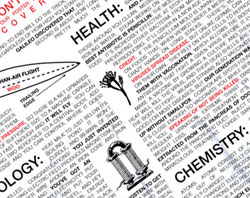Ze Frank recaps his experiences running zefrank.com during Webstock 09.
[Ze Frank at Webstock 09 – Vimeo]
A collection of digital wonders and some other stuff
Ze Frank recaps his experiences running zefrank.com during Webstock 09.
[Ze Frank at Webstock 09 – Vimeo]
A week ago I was up early at 4:30am to ride down to the States with some friends to enjoy the festivities at the Sasquatch! Music Festival. After nearly 12 hours on the road, we arrived at the festival grounds, set up camp and watched as thousands of others did the same.
The Festival takes place in the most beautiful venue I’ve ever seen. It’s a gigantic amphitheatre called The Gorge. There were so many interesting people and so many great artists—check out some of the photos and videos I captured from the event:
[Sasquatch! Music Festival Slideshow – Flickr]
Carousel is a short film by Adam Berg created around the idea of a frozen moment with cops and robbers engaged in an epic shootout that includes clowns, explosions, a decimated hospital, lots of broken glass, and plenty of bullet casings.
[Carousel – YouTube]
See how clever they were with the title? It’s designed to be played as a loop.
Disney has released the trailer for its newest full length feature animation, The Princess and the Frog. It will be the animation studio’s 49th animated feature and the first traditional animation feature since Home on the Range — my least favorite Disney animation of all time. I’m hoping things have improved…
[Princess and the Frog Trailer – YouTube]
The new movie will add to Disney’s profitable princess franchise, and, more importantly, with directors John Musker and Ron Clements at the helm, I suspect it will have the kind craftsmanship and story that will make it worthy to become part of the Disney Classics canon.
Ron and John’s directing credits include: The Great Mouse Detective, The Little Mermaid, Aladdin, Hercules, and Treasure Planet. These guys have worked with the masters and, of course, are masters in their own right.
The Animation Podcast has a great interview with Ron and John in three parts.
Life is a stage. Sometimes we fail on stage—luckily keyboard cat is there to play us off.
http://playhimoffkeyboardcat.com/
(via)
 Imagine you’ve gone back in time, but you’re hankering for a few of the amenities you’ve grown accustomed to living in the 21st century. Hopefully you remembered to bring your Time Traveler’s Cheat Sheet, a handy guide to inventing some of life’s essentials.
Imagine you’ve gone back in time, but you’re hankering for a few of the amenities you’ve grown accustomed to living in the 21st century. Hopefully you remembered to bring your Time Traveler’s Cheat Sheet, a handy guide to inventing some of life’s essentials.
A moving electric field produces magnetism, and vice versa, wrap copper wire around an iron core and run electricity through it, and you’ve got an electromagnet. Don’t have any electricity? Put a magnet on a water wheel, and put your copper-wrapped iron beside the wheel, and hey presto, you’re converting mechanical energy into electricity.
In 1962, the IBM 704 became the first computer to sing. The song was Daisy Bell. John Kelly and Carol Lockbaum programmed the vocals and the accompaniment was programmed by Max Mathews. This performance was the inspiration for the famous scene in 2001: A Space Odyssey in which the HAL 9000 computer sings the song as it is deactivated.
In 2009, the song has been recreated using 2000 clips of human voices collected via Amazon’s Mechanical Turk. Workers were asked to listen to a short clip of the 1962 recording and then prompted to repeat the sound as best they could.
See the Bicycle Built for 2000 project page for an interactive look at each sound clip.
The NHL playoffs begin today. Personally I’m rooting for the Calgary Flames, but I’ll be happy if any Canadian team wins the cup.
Whether or not you’re planning to watch any of the games tonight, take ten minutes to enjoy The Sweater, a classic Canadiana short from the NFB.
In this animated short, Roch Carrier recounts the most mortifying moment of his childhood. At a time when all his friends worshipped Maurice “Rocket” Richard and wore his number 9 Canadiens hockey jersey, he was mistakenly sent a Toronto Maple Leafs jersey from Eaton’s. Unable to convince his mother to send it back, he must face his friends wearing the colours of the opposing team. This short film, based on the book The Hockey Sweater, is an NFB classic that appeals to hockey lovers of all ages.
The Sweater, Sheldon Cohen, provided by the National Film Board of Canada.